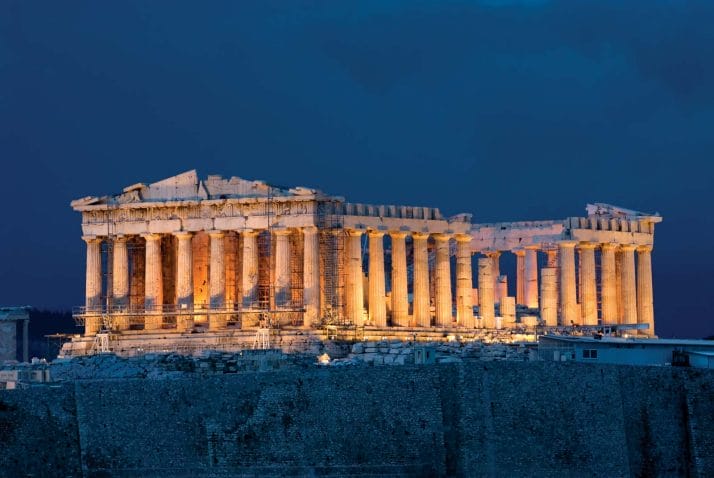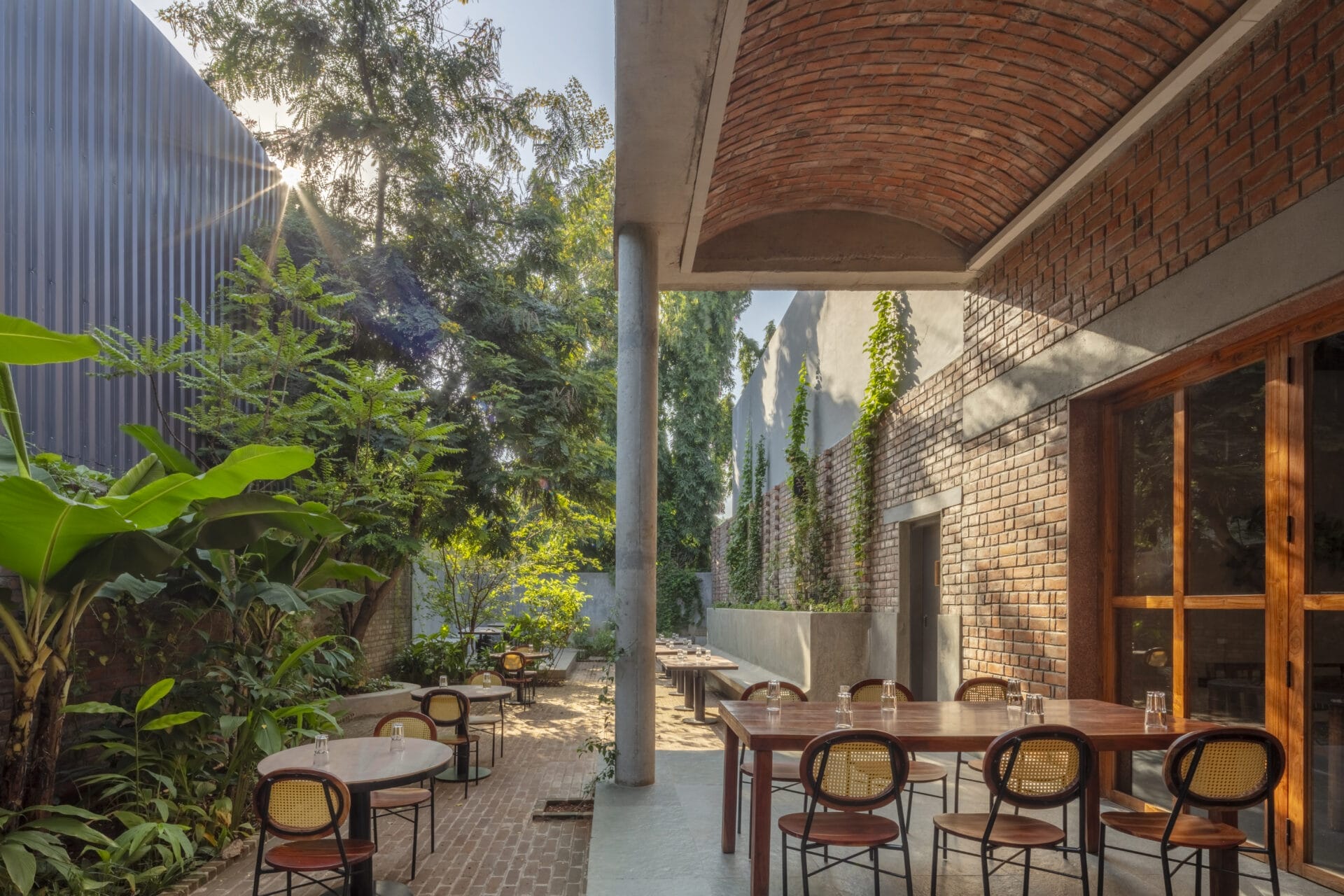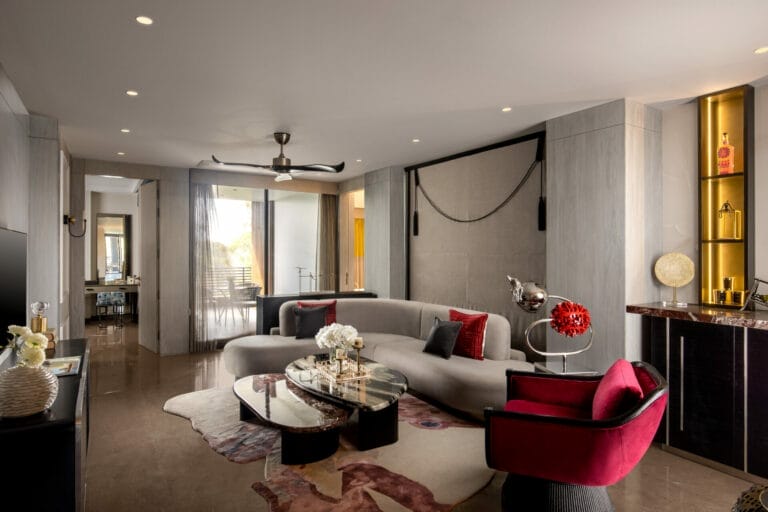Mathematics and Architecture are two disciplines that are interlinked ever since. Geometry, Symmetry, Trigonometry, and Algebra are the mathematical expressions that are applied while conceiving the structural details of any building. Apart from the engineering aspect, the other usage of mathematics in architecture is defining the spatial form of any building. Environmental considerations like wind speeds around, solar radiation intake, and energy demands of a building are mathematical and technical calculations done while designing any project.
The ancient architecture entails the calculated proportions considered while designing temples, mosques, pyramids, mausoleums, and palaces in India, Greece, Egypt, and Islamic culture due to various religious reasons. Mathematics in Architecture not only reflects proportion and symmetry but also accentuates and beautifies the whole design language with defined scale and size of every detail.
Listed are a few monuments that stand true to the term Mathematics in Architecture-
1) Char Minar, India
As the name would suggest, the design of this monument links to the number four and its multiples. The experts suggest that the architecture is composed of a lot of mathematical reasoning and geometric combinations. It is considered a mosque built to commemorate the end of a widespread plague in Hyderabad in 1591 CE by Muhammad Quli Qutb Shah. It is a square form with each side measuring 20 meters. Each side has a grand arch and opens directly onto the street in front of it. Every corner is graced with a 56-meter-high minaret with a double balcony.
Each minaret is crowned with a voluminous dome with a petal-like design at the base and 149 steps leading to the upper floor. The number four and its multiples can be recognized in around 22 places in the design of structure making it an ideal example of mathematics in architecture.

2) Sagrada Familia, Spain
It is the most famous tourist attraction in Spain designed by architect Antoni Gaudi. This architectural marvel is a splendid example of mathematics in architecture that will make you gnash your teeth too. The architect incorporated Hyperbolic paraboloid structures in the design which are quite visible in specific facades of Sagrada Familia. Hyperbolic paranoid is a quadric surface or a saddle-shaped surface in this case. The passion facade of the structure features a magic square which is a mathematical arrangement. In this arrangement, all the numbers in all columns, rows, and diagonals add up to the same sum which is 33 for this building.

3) The Eden Project, UK
The Eden Project in South West England is the world’s largest greenhouse which was established in 2001 and is now the UK’s most popular tourist destination. The greenhouse is a geodesic dome made up of hexagonal and pentagonal cells. The project was introduced to an education center – The Core, in 2005 presents the relationship between plants and people.
The design of this center is inspired by Fibonacci Numbers- a math sequence that relates to the branching or sequencing of things in nature. It is used to showcase the nature that is an integral part of the project. More mathematics in the architecture of this design can be seen in the structure derived from Phyllotaxis which is the mathematics base for most of the plant growth.

4) Qutub Minar, India
This Minar is located in the Mehrauli area of south Delhi with red sandstone. It is a victory minaret built in the 13th century as a part of the Qutub complex. The height of the tower is 72.5 meters and the highlighting feature of the minar is its tapering form and standing still despite such height and age. It tapers from 2.75m in diameter at its peak to 14.32 m in diameter at its base which makes it an astounding example of mathematics in architecture. It has alternating rounded and angular flutings. The other elements of the complex are built with reused materials from around 20 Brahman temples.

5) Parthenon, Greece
Parthenon is a perfect representation of proportion-driven architecture. It was built around 430 BC aligning with the ancient Greek ideals of harmony. The width to height ratio of the building is 9:4 articulating its perfect horizontal and vertical proportions. The overall design of the structure is assumed to be built according to the concept of the Golden Ratio which is 1:1.618. The quest for perfection and aesthetics is visible in the design of the columns. If the columns would have been conceived in a complete straight form then it would have created an optical illusion of columns being thinner in the middle. To eliminate the illusion effect, Greeks made the column slightly thicker in the middle.

6) Lotus Temple, India
For the Lotus temple, mathematics in architecture forms the basis of design. This lotus-shaped monument was conceived with a combination of various geometrical shapes. It was designed by architect Fariborz Sahba and the lotus flower had to be simplified into geometrical forms such as spheres, toroids, cones, and cylinders, for structural analysis and making engineering drawings. The frame is carved with concrete with a precast concrete ribbed roof which incorporates 27 white marble-clad petals. The petals are arranged in clusters of three to formulate nine sides of the flower further surrounded by nine pools of water. The central hall is accessed through nine doors and can accommodate 2500 people.

7) The Great Pyramid of Giza, Egypt
One of the seven wonders of the world, the Great Pyramid of Giza is the largest and the oldest of all the three pyramids. It is the tomb constructed in the 26th century BC by Fourth Dynasty pharaoh Khufu and it remained the tallest man-made structure in the world for around 3800 years. The construction of this world-famous pyramid used detailed mathematics in architecture and engineering of its structure.
Cubit is the first recorded unit of length and in cubits, the perimeter of the pyramid is 365.24 which is an equivalent number of days in a year. If the parameter is divided by twice the height of the pyramid equals 3.1416 which is the value of Pi. The measurements of the King’s chamber are based on a Pythagorean triangle. Isn’t it enough mathematics for designing a structure!





















